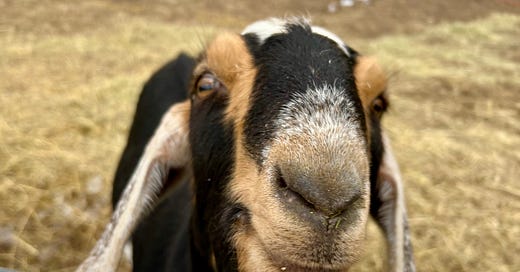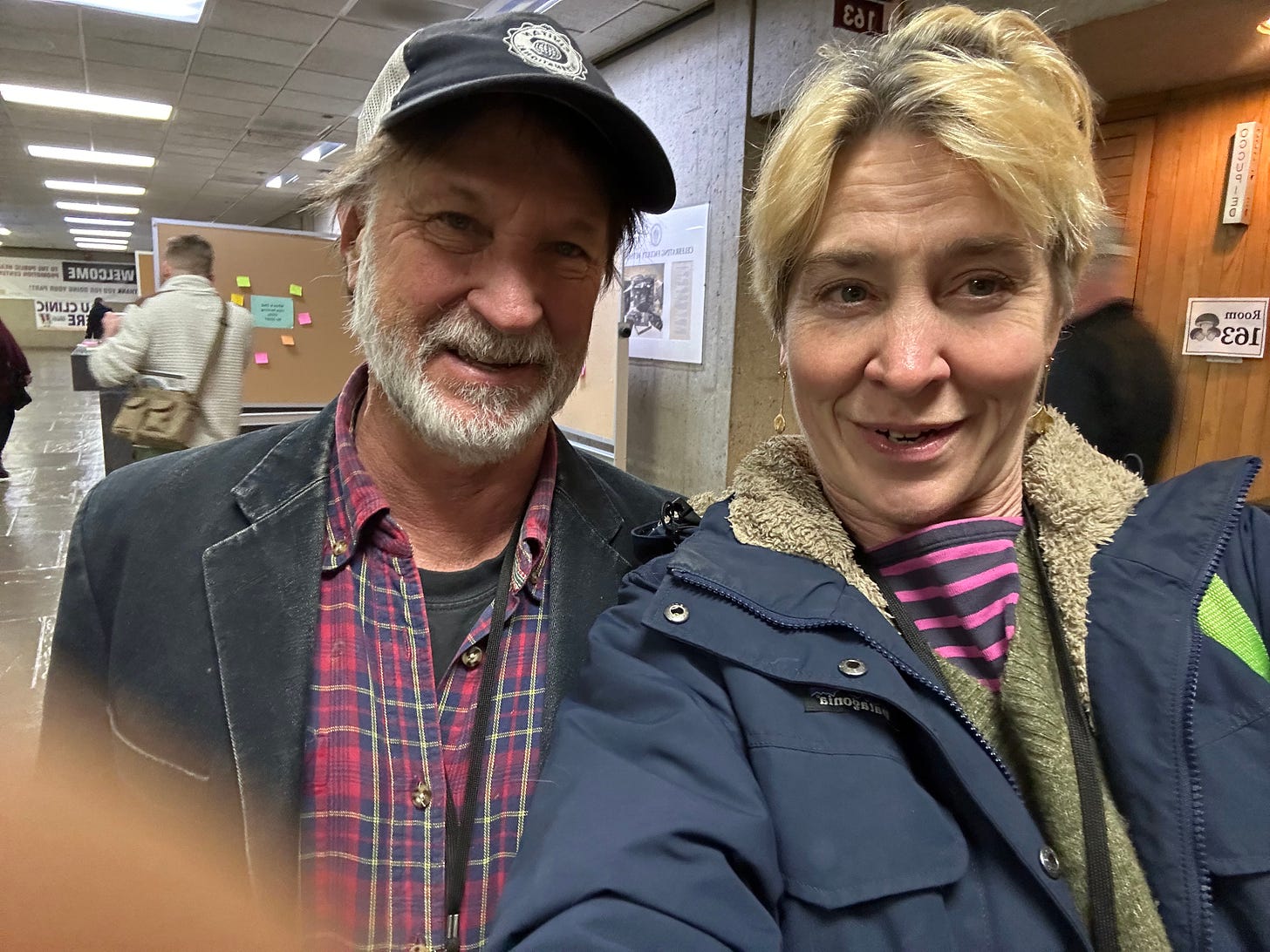In the summer of 2023, a woman named Kate Mudge emailed inviting Lonely Worm Farm to join the Care Farming Network (CFN). At first I was suspicious. Just who is this person? And how much money does she want? But there was no fee. She was offering the opportunity to take part in monthly webinars and zoom meetings with farmers around the country who were focused on caring for people as well as the land. The point was simply to share experience and help one another.
Care farming, as I soon learned, is a broad term for projects and programs that use farming to foster a sense of belonging and purpose among people facing all sorts of challenges. Farming as therapy might sound strange in the United States. American agriculture can be a lonely profession: a guy on a tractor and a crew of temporary laborers wresting soybeans or corn from hundreds of acres of land all too often sprayed with toxic chemicals. In Europe, however, where the practice developed, small family holdings are the norm. Imagine a few acres of ecologically raised orchards and vegetable beds, larger pastures for livestock, families who have lived on the land for generations… Now imagine one of these families making space for, say, folks from a local autism center. Not inviting them once, but integrating them into the farm on a regular basis. Giving them responsibilities. Maybe they feed the chickens. Eventually the chickens come to recognize them and the folks from the autism center recognize the role they play in the chickens’ well being. In this way, relationships and skills grow and a connection with nature deepens.
In the United States, where farms are fewer and often belong to the realm of Big Ag1, care farms are comparatively rare—roughly 300 in the US to 3000 in Europe and the UK. Those that exist are often created from scratch by families, agencies or, in the case of Woody Woodroof, the founder of the CFN, artists with a vision. Nearly thirty years ago, Woody culled together Red Wiggler Farm2 to provide meaningful, paid work for adults with developmental disabilities and healthy vegetables for the community. The success of that project led to the Care Farming Network, launched in 2018 to connect similar farms, share best practices, support new programs, and raise awareness of care farming among the general public.
Last week, I drove up to UMass Amherst for the network’s first annual conference, a kind of shangri-la for folks like me. There were flower farmers from Tennessee, shiitake log moguls from Massachusetts, trauma informed gardeners and llama tenders from Texas. Some 170 people from around the country had found a way to gather in the concrete hulk of the student center where we buzzed around, taking part in panel discussions, happy hours, and meals. There was a field trip to Prospect Meadow Farm. There were breakout sessions investigating hydroponics, aquaponics, employment models, matching abilities with tasks, preventing burnout, accessible farming tools, animal assisted interventions, fundraising, training for neurodivergent employees, managing conflict, and more.

I was invited to speak on a panel about the different forms community care farms can take. My co-panelists, Alethea Vasilas of Orkestai Farm and Jennyrae Brongo of Homesteads for Hope, had considerably more experience, their farms having weathered over ten years of highs and lows, whereas Lonely Worm Farm is in its toddler stage, but they made me feel right at home.
That sense of at-home-ness percolated throughout the conference. Many spoke of the joy of realizing that they are not alone, that indeed they are part of a growing movement—one based on embracing the land and each other, which is surely much needed in these divided times.
Another thing that happened: not long after arriving at the conference, I learned that the Christopher & Dana Reeve Foundation would be giving Lonely Worm Farm almost $25,000 to expand and bolster our wheelchair path. I whooped and hugged my new friends, hardly believing it, and they hugged me right back, knowing how important this was. To receive two such gifts at the same time, the spiritual heft of the conference and the brass tacks of monetary assistance, felt marvelous, a sign that I am in the right place.
Below is a selfie of Woody Woodroof and me. I had just asked him how he was feeling. He shook his head, a little dazed. He’d spent the last five years visiting farms, forging friendships, and working to bring everyone together under one roof. But it’s hard to wrangle farmers. That it’s happened, he said, and so smoothly—it’s a dream come true.
According to the 2022 USDA Census, there are 1.9 million farms in the United States, whose average size is about 440 acres. According to the European Union, there are about 9.1 million farms in Europe, whose average size is about 42 acres.
We had no idea, when we named Lonely Worm Farm, that we were continuing in a tradition of care farms named after worms.





It's heartwarming to read about a groundswell of care farms in the midst of what can seem like a perfect storm of callousness. Lonely Worm isn't lonely any more - she never really was! Thank you for the REAL hope, Eliza and friends!
Love that goat!